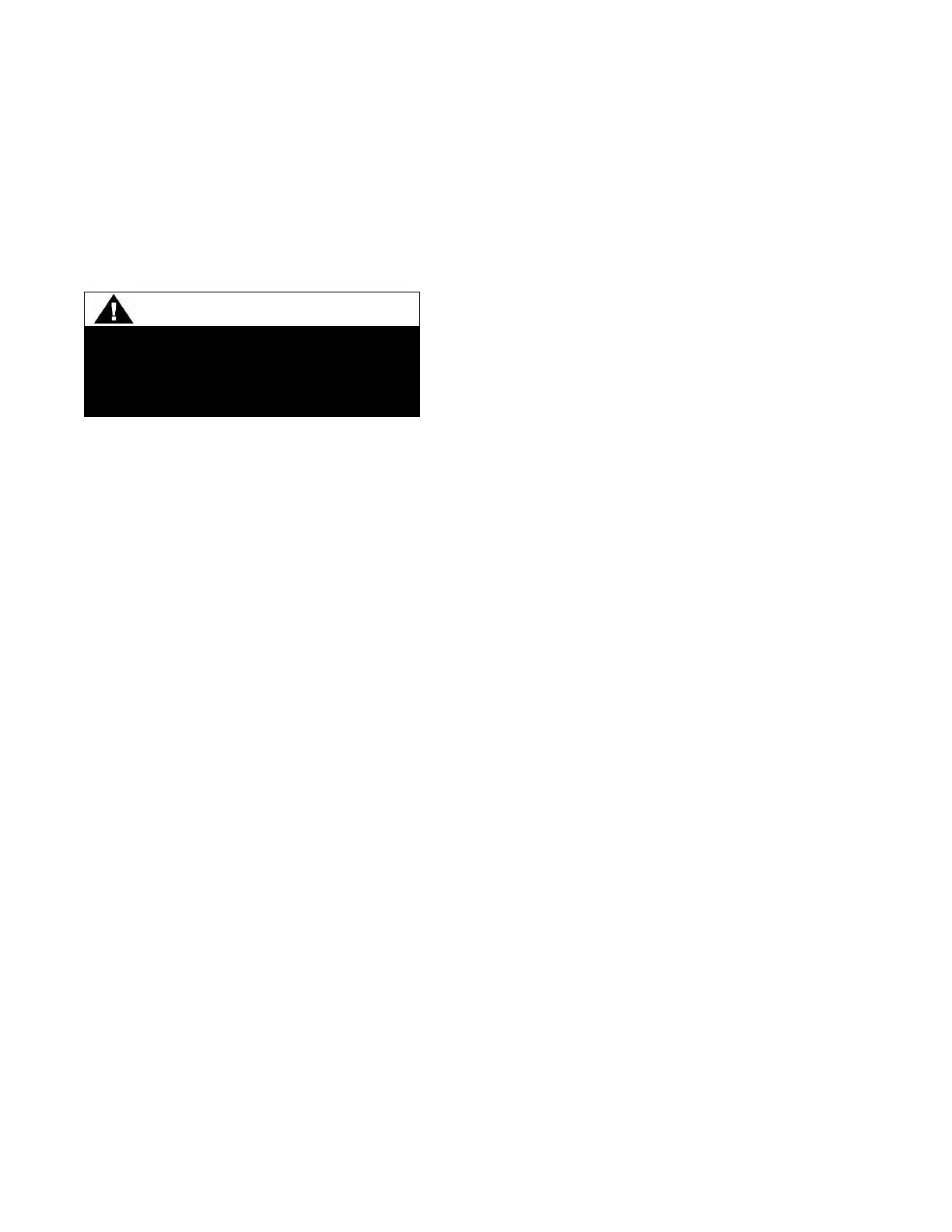Access Restrictions
All FWCD units are designed to pass through a
standard 36-inch doorway. See outline drawings
for other important dimensions.
Compressor Mounting
All compressors are rigidly bolted with
compressor isolation mounts to the same
compressor mounting frame (rails). No additional
isolation or leveling is required. Inspect prior to
start up to ensure bolts are present and tight, and
that no shipping damage has occurred.
Direct Mounting
The unit can be installed directly on an isolated,
rigid mounting surface as long as the surface is
level and will support the weight of the unit. A
mounting hole is provided at each of the unit
mounting locations. See Foundation for more
details. Provide a means of securely anchoring the
unit to the mounting surface. Level the unit
carefully.
Unit Leveling
Before tightening the mounting bolts, level the
unit. Check unit level front-to-back (depth) by
using a level, or by placing a level on the top
surface of the unit frame. Unit should be level
within 1/8-inch front-to-back (depth). Place the
level on the unit frame and check side to side level.
Adjust to within 1/8 inch of level side-to-side. Use
shims as required to properly level the unit.
The serial number information is also on record at
the factory.
Typical Water Piping
All building water piping must be flushed prior to
making final connections to the chiller. To reduce
heat loss and prevent condensation, insulation
should be applied. Expansion tanks are also usually
required so that chilled water volume changes can
be accommodated.
Avoidance of Short Water Loops
Adequate water volume is an important system
design parameter because it provides for stable
chilled water temperature control and helps limit
unacceptable short cycling of chiller compressors.
The chiller’s temperature control sensor is located
in the supply (outlet) water connection or pipe.
This location allows the building to act as a buffer
to slow the rate of change of the system water
temperature. If there is not sufficient water volume
in the system to provide an adequate buffer,
temperature control can suffer, resulting in erratic
system operation and excessive compressor
cycling.
Typically, a three-minute water loop circulation
time is sufficient to prevent short water loop issues.
Therefore, as a guideline, ensure the volume of
water in the chilled water loop is greater than or
equal to three times the evaporator flow rate. For
systems with a rapidly changing load profile the
volume should be increased.
If the installed system volume does not meet the
above recommendations, the following items
should be given careful consideration to increase
the volume of water in the system and, therefore,
reduce the rate of change of the return water
temperature.
